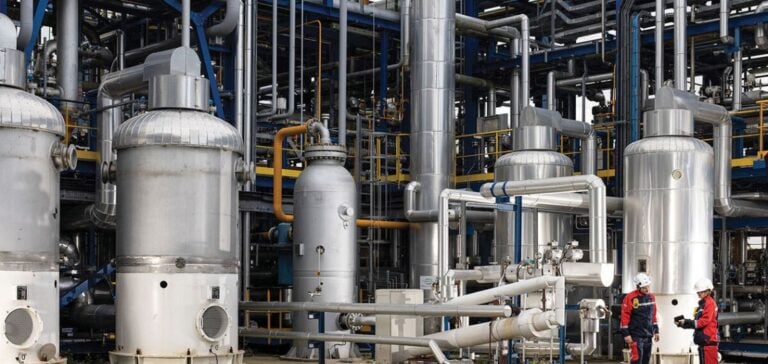Blue hydrogen, extracted from natural gas with carbon capture and storage (CCS), is experiencing significant growth. This process makes it possible to produce low-carbon hydrogen, which is essential for various industrial sectors. In 2024, the blue hydrogen market is expected to reach USD 2.3 billion and could reach USD 5.5 billion by 2033, with a CAGR of 10.8%, according to Dimension Market Research.
Technologies used include methane steam reforming, partial gas oxidation and auto-thermal reforming. These methods capture and store the CO2 produced, thereby reducing global carbon emissions.
Investments and strategic partnerships
The growth of the blue hydrogen market is supported by substantial private and public sector investment. These funds are earmarked for the development of production facilities and transport infrastructures. Technological advances in carbon capture and storage make this production more efficient and economical.
Strategic alliances between major energy companies and technology firms are crucial to accelerating the deployment of blue hydrogen projects. These partnerships draw on the expertise and resources of each party.
Government regulations and initiatives
Government initiatives, such as subsidies and favorable regulatory frameworks, are driving growth in the blue hydrogen market. These measures encourage investment and support the development of the necessary infrastructure. Global decarbonization objectives, such as those of California, New York and Canada, which is aiming for carbon neutrality by 2050, are creating an environment conducive to the expansion of blue hydrogen.
North America is set to dominate the market in 2024 with a 41.2% revenue share, thanks to its vast natural gas reserves and strong demand for low-carbon energy. Asia-Pacific, led by China’s major investments and its goal of carbon neutrality by 2060, is also a fast-growing market.
Market challenges and opportunities
The blue hydrogen market faces several challenges, including high production costs and infrastructural limitations. Carbon capture and storage technologies still have to overcome technical hurdles before they can be deployed on a large scale.
Despite these challenges, the blue hydrogen market offers many opportunities. Collaborations between energy companies, governments and technology providers can accelerate project development. Advances in carbon capture and storage technologies are reducing costs and improving the economic viability of blue hydrogen.
Recent developments in the blue hydrogen market show a definite dynamism. In March 2024, MMEX Resources advanced its green hydrogen project by proposing a high-volume supply to a major oil company, in collaboration with Siemens Energy. In July 2023, Germany updated its hydrogen strategy, focusing on imports from Denmark and Norway and developing blue hydrogen with CSC to support the steel, chemical and heavy transport sectors.
As a transitional solution, blue hydrogen plays a key role in reducing carbon emissions and promoting cleaner energy. Investment, technological innovation and government support continue to propel this market to new heights, contributing to a more sustainable global energy transition.






















